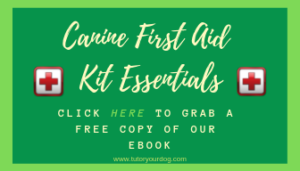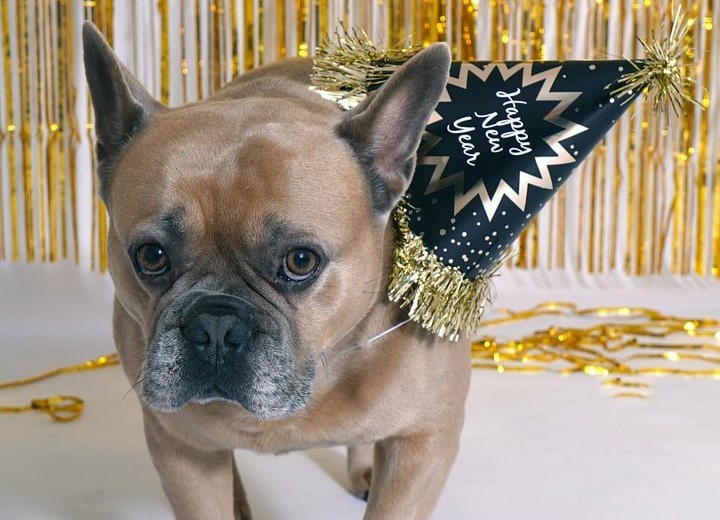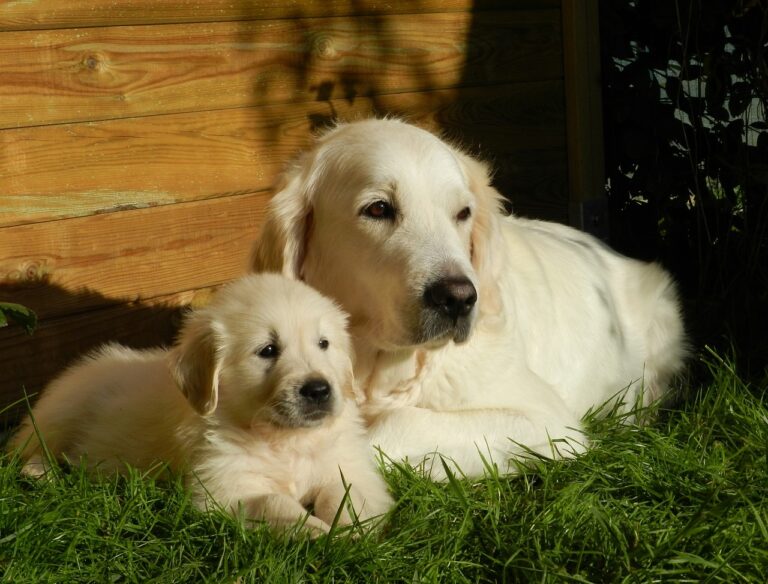{This post may contain affiliate links. This means we may make a small commission at no extra cost to you. This website is a participant in the Amazon Services LLC Associates Program. As an Amazon Associate we earn from qualifying purchases. We only recommend products that we believe will be of value to our followers. Click HERE to see our disclosure for details.}

There’s nothing better than walking through nature, enjoying the surroundings with your dog. The peacefulness, the quiet, the chance of seeing wildlife that no one else might ever see. If you are lucky, you live in or near an area with hiking trails. Hiking is my favorite activity with my dog, I think that it’s his favorite activity too. But like anything, there is always some training to do before and precautions to take to make hiking with your dog fun and safe.
How Do You Make Hiking With Your Dog Fun And Safe?
1. Teach Your Dog A Reliable Recall
Our favorite hiking places are the off leash trails. Not all dogs can be trusted off leash but if you have a dog with a solid recall, they are very enjoyable for you and your dog. Some breeds are notorious for not being trusted off leash. With lots of consistent training you can teach a recall but you should be very cautious, as a breed that is known to have a high prey drive or be known to be very independent, could take off and be hard to convince to come back. Doing your recall training before attempting to do off leash hiking is important for any dog but if you have a dog that cannot be trusted 100%, it’s best to keep that leash on. Find a safe place where you can practice your off leash walking before trying it out on a trail.
Related Article: Teaching A Solid Recall
2. Be Respectful Of Wildlife And Nature
Know your dog! If he likes chasing things, like the neighbor’s cats or squirrels in the backyard, chances are if he sees wildlife he’s going to want to chase it. Some dogs can be trained to ignore these distractions, others may always be a risk for chasing animals. If your dog does not listen when he sees an animal it is best to keep him on leash while out hiking for his own safety as well as for the safety of the wildlife.
Be respectful of nature by picking up after your dog. Carry doggy poop bags with you and use them when your dog relieves himself. Many trails have garbage cans along the main routes.
3. Obey Any Leash Laws
If you are hiking in an area that requires all dogs to be leashed, then leash your dog, it’s quite simple. Not everyone appreciates a dog running up to them. Some people are scared of dogs and are terrified when a dog races up to them. Or someone may have a dog on leash that doesn’t like to be approached by other dogs. Respect the law and keep your dog on leash in these areas. These laws are there so that everyone can enjoy the trail.
4. Select Trails That Are Safe For Your Dog

Do your research on a trail before you take your dog there. Are there cliffs or dangerous areas for your dog? If your dog is going to be off leash make sure that the trail is safe for your dog to prevent an accident from happening. What type of wildlife is in the area? If there are poisonous snakes, wolves, coyotes, etc you need to keep your dog on leash close to you. In areas where there are rattlesnakes, rattlesnake aversion courses are often taught. Try to find a course that uses positive reinforcement rather than shock collars. If you plan on doing a lot of hiking in areas that are known to have rattlesnakes, this training will come in very handy and hopefully keep your dog out of danger if he ever comes across a rattlesnake.
Another thing to consider is the difficulty and length of the trail. Make sure that your dog is physically fit and able to do the trail that you choose. Just like humans, they need conditioning and training to build up their stamina for a long hike.

5. Always Pay Attention To Your Dog
When hiking off leash with your dog, always keep him in sight. You never know what dangers could be off of the trail. There could be traps or snares off of the trail. There could be harmful plants or dangerous wildlife. If your dog isn’t trained to stay within sight of you, he should be on leash for his own safety.
If you see other people with their dogs, put your dog on leash until you can assess the other dog to make sure that he is friendly. The last thing that you need is for your dog to get attacked by another dog. Besides having serious injuries, getting attacked by another dog can make your dog fearful around other dogs and it can cause behavioral issues with your dog, including reactivity to other dogs.
Always watch to make sure that your dog doesn’t eat or drink something along the trail. Other hikers could have left garbage or there could even be dead wildlife or stagnant pools of water. These things could make your dog sick, cause him to get parasites or ingest harmful bacteria.
6. Always Have A High Value Reward With You For Your Dog
You always need to be more exciting than any distraction that you may encounter on the trail. Make sure that you have your dog’s favorite treat or toy, the one that he just can’t resist. Let him know that you have his favorite things with you and if you need them, use them. Sometimes even having a high value reward won’t be enough to keep your dog from running off or getting in to something that he shouldn’t, so always be prepared for these situations. Keep your dog on his leash or even a long line (if there aren’t other hikers and dog’s around) if you aren’t confident that he will stay with you.
7. Take A First Aid Kit With You
Hiking is a relatively safe activity BUT there’s always the chance of cuts, scraps and scratches, especially if your dog likes to explore a bit. Having a first aid kit with you will come in very handy if there is an accident and you need medical supplies. Take any phone numbers you may need, medical supplies and medications that your dog may need. For a complete list of things to include in your dog’s first aid kit, be sure to download our Canine First Aid Kit List. This is a complete list of essentials that you should include in your first aid kit.
8. Bring Water and Snacks For You And Your Dog

Taking water and snacks for both you and your dog along on your hike is a good habit to get in to. The water along the trail could be contaminated with bacteria or parasites, especially stagnant water that has been sitting there for a while. Offer your dog fresh water often, especially on hot days, to prevent him from drinking out of puddles or other pools of water.
If you are on a lengthy hike, stopping for a break and having a snack is important for both you and your dog in order to keep your energy up so you can keep going. Pack some healthy dog treats or a bit of your dog’s kibble to have as a snack if needed. Always keep in mind not to feed your dog too much before any physical exercise. Some dog breeds are prone to bloat so only small snacks along the way. If you are on a long distance trail and need to have a meal, make sure that you wait at least 20 minutes before your dog does any amount of running to reduce the chances of bloat.
9. Dress For The Weather
This is very important, not only for you, but for your dog too. If it is cold, your dog may need a coat and boots. If it’s hot, your dog may need a cooling coat. Check the weather before you leave for your hike and make sure that you and your dog are dressed appropriately for the weather.
Related Article: Top 10 Best Cold Weather Winter Coats For Dogs
10. Always Check Your Dog Over Carefully After A Hike
After a hike, check your dog over very carefully. You will want to make sure that he doesn’t have any ticks on him, especially if you live in an area where there are tick borne diseases. Be sure to check yourself over carefully too! If he is a coated breed, he may have thorns or sticks in his coat that should be removed. Check his body and legs for any cuts, scrapes or bruises. Check for any lameness or stiffness. Use your first aid kit if necessary.
Don’t know of any dog friendly hiking trails in your area? A quick Google search should help you find some great trails with directions and reviews so you can research the trails before trying them out with your dog. There’s nothing better than enjoying the great outdoors with your best friend!
Related article: 5 Reasons Why Your Dog Needs A Fitbark 2











